Every gardening enthusiast knows that plants are often subject to bugs. House plants are no different. In fact, the growing condition of indoor plants is more likely to attract bugs. It can be due to the lack of proper air circulation or the increased levels of humidity indoors, but there is no way to avoid them completely.
However, recognizing the types of bugs your plant might fall prey to will help you recognize the symptoms and the bug responsible for them. An early diagnosis helps you take effective measures to protect your plant before too much damage has been done.
Hence, we have prepared a detailed guide for you to help you learn about the different types of bugs that attack houseplants and how you can identify them.
Common Types of Bugs That Attacks Houseplants
Aphids

Also known as greenfly or blackfly, depending on the color of the bug. These pests are generally seen sucking from new leaves and soft plant tissues. However, this does not restrict their area of attack, and they can be found anywhere on the leaf and the green stems of the plant. They are usually found in two colors: green and black. The only silver lining to the situation is that they are easily visible by the human naked eye if you look closely enough.
Symptoms: Here are a few common symptoms of an Aphids attack
- Pile of sticky honeydew on your leave
- White/grey husks on the soil
- Yellow patches on leave in case of a severe attack
Treatment: A few common home remedies to get rid of aphids include:
- Sprinkling cold water on the plant
- Spraying water mixed with few drops of dish wash.
- Sprinkling flour that will constipate them and reduce the Rapid reproduction process.
2. Mealybugs
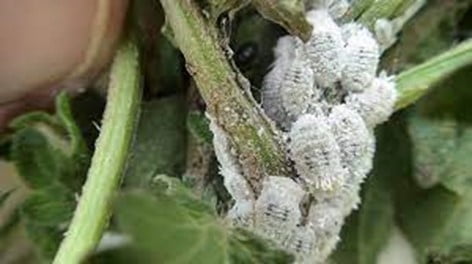
Mealybugs are generally found in clusters that resemble cotton wool or furry woodlice. They, too, attach your plant by sucking the sap from the list and plant tissues. Speaking of the size, it is large enough in comparison to other plant bugs, which makes it easier to spot. This is, however, fatal for your plants and can make the leaves turn yellow and fall off if left untreated.
Symptoms: Here is a list of symptoms of a mealybug attack
- Honeydew Residue
- A cluster of White wooly bugs on the underside of the leave
- Your plant will look dehydrated and start wilting.
Treatment: Here is a list of home remedies to use in case of a mealybug infestation
- Remove the cluster of bugs with an alcohol-dipped cotton ball.
- Spray dishwashing soap to suffocate and kill them.
- Spray Neem Oil all over the plant to prevent them from coming back.
3. Red Spider Mite
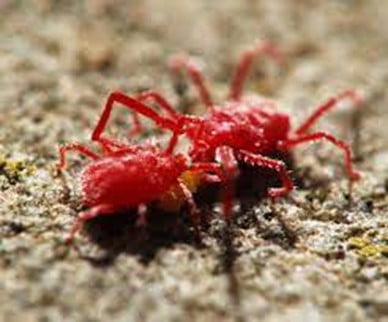
This is unarguably one of the most difficult bugs to get rid of. As the name suggests, they belong to the spider family, but unlike regular spiders, they build a web all over your plant and feed on the plant’s nutrients and sap. They use the web to travel from one part of the plant to the other. This means that soon they will have control over the entire plant. This puts not a single leaf or a part of a plant in danger, but the entire plant is on the edge of dying.
Symptoms: Here is a list of symptoms that will help you identify your red spider mite attack
- The web spun by the spiders is the most obvious symptom.
- Brown blotches all over the leaves, which are basically the dead cells of your leaves.
Treatment: You can try out these common home remedies to get rid of red spider mites
- You can use diatomaceous earth, which is lethal for red spider mites.
- You can also use horticultural oil or neem oil to drive away from the bugs.
4. Scale Insects

The biggest challenge with scale insects is difficult to identify and even more difficult to get rid of. These insects have a hard brown outer shell that strengthens the grip On the Leaves and makes some difficult to identify. On top of that, they look like regular blemishes and spots on leaves.
Symptoms: here is a list of symptoms as they had to identify a scale insect infestation
- The leaves of a plant will be filled with honeydew.
- Sometimes, the honeydew turns black and result in black blotches on leaves.
- If you look closely, you will find brown spots all over your leaf. These spots are not blemishing, and it is the insect itself.
Treatment: Before heading over to chemical treatment you can use these home remedies:
- Get rid of the infected leaves and stems.
- Alcohol dipped cotton balls on the infected areas.
- For low levels of infestation, you can also use a neem-based leave shine spray.
5. Thrips

Also commonly known as thunder fly, these are the worst kind of bugs that can do unimaginable damage to your plant. The worst thing about these bugs is that they act so quickly that before you know it, your plant will wilt. What makes controlling this infestation even more difficult is the fact that they can spread from one point to another.
So, if you do not take a step at the earliest, there are high chances that all the plants in your house will soon be infected with the same bug. They are also extremely difficult to get rid of completely. So, you only have two options, either you get rid of them as soon as possible or throw the infected plants to ensure that the other plants are protected.
Symptoms: It is hard to spot thrips. They are mostly found on the underside of the leaves, with the color so similar that they almost blend. It is only when you find your leaves turning yellow that you realize that something is off.
Our advice here is not to blame the cause of yellowing leaves on overwatering and instead keep a check on your plant closely. Sometimes water might look like a speck of dust from a distance can turn out to be clustered of thrips.
Treatment here comes the most important part about thrips.
- Get rid of the infected parks to avoid the infestation from spreading.
- Use neem oil for horticulture oil to kill the bugs.
- Using an insecticide is the most effective way of getting rid of these deadly bugs.
6. Whiteflies
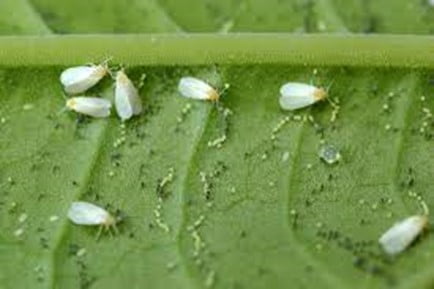
Although whiteflies are not common in every region, it is worth mentioning them because of their rapid reproduction rate. These flies feed on your plants’ sap. Hence as they keep reproducing, your plant is pushed further off the edge.
They are small and white and resemble moths in their physical structure. Mostly found on the underside of the leaf, if not taken care of, soon it can infect your entire plant that ultimately leads to its death. Sometimes, it is not even your fault.
You might have bought a new plant from an infected greenhouse which led to this bug attack. But even so, if it is your responsibility to get rid of them. One of the worst things about this bug is that it survives extreme cold temperatures, which makes it difficult for you to get rid of them.
Symptoms: Here is a list of symptoms that will help you identify and infestation by whiteflies:
- Presence of white waxy residue on your leave
- Honeydew Residue on the lower side of leaves where they mainly live.
- Dark sooty molds on the leaves
Treatment: As dangerous as they are, obviously there are a few remedies that will help to get rid of them
- You can use yellow sticky cards to trap the Flies.
- You can also try using an Insecticidal soap to get rid of them once a year.
- Horticultural oil is equally effective in helping you get rid of these bugs.
So, these were the 6 types of bugs commonly found on houseplants and how exactly you can identify them. The detailed symptoms that we have mentioned will help to recognize the bugs, and the treatments recommended by us will help to get rid of them in no time.
However, it is important to identify them at the earliest when it comes to house plants. Maintaining healthy houseplants is all about observation. Whether it is house plant identification by leaf shape or bug identification through visible symptoms, you need to have a keen eye to notice the changes happening in your plant to be able to stop infestations as soon as possible.
We hope this article was helpful and all your doubts were cleared. If you have any further queries feel free to reach out to us in the comments section below.

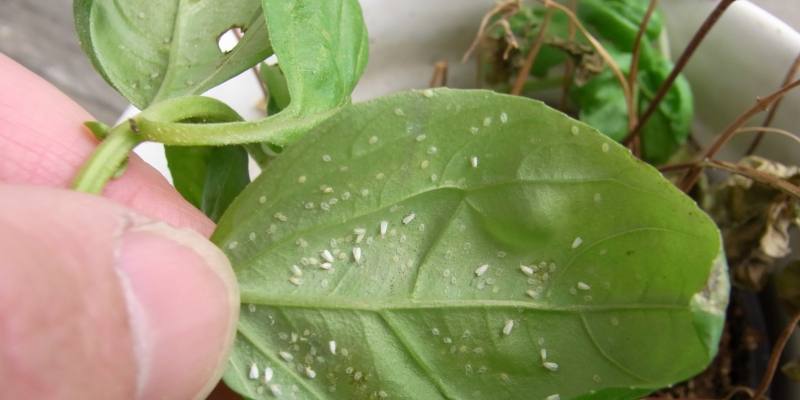

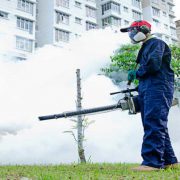


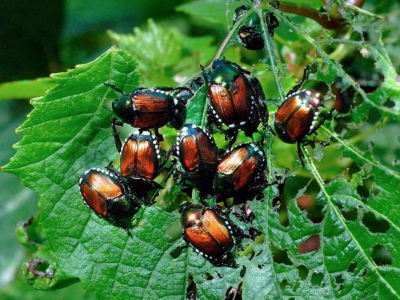


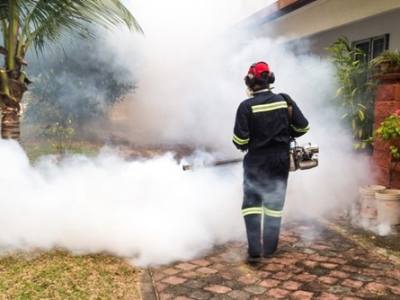
Comments